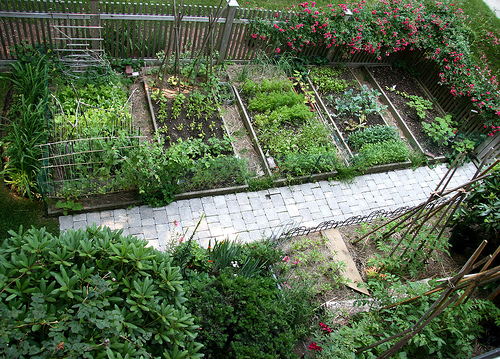The Search for the Perfect Diet
Dr. Weston Price lived in the right time, and had the right resources, to travel all over the world in search of the secret to health. This highly-respected dental researcher focused on discovering why some groups of people had amazing health.
It was common knowledge at the time that indigenous peoples rarely, or never, had cavities in their teeth. Dr. Price went to some of the most remote areas in the world to investigate. He observed perfect dental arches, minimal tooth decay, and overall excellent health in those groups of people who ate their indigenous foods.
He also found when these people were introduced to modern foods (such white flour, sugar, refined vegetable oils, and canned goods) signs of degeneration quickly became quite evident.
Why Are Traditional Diets Superior?
Dr. Price documented this ancestral wisdom including hundreds of photos in his book Nutrition and Physical Degeneration.
So the short answer is avoid modern processed foods. I am sure you have already heard that before – so here is the shocker you haven’t heard.
Dr. Price took samples of the foods the people ate and had them analyzed for nutritional content. A simple and stunning result was that the indigenous diets contained 4 to 10 times as much nutrition as a typical modern diet.
Let me state that again.
The healthiest people in the world eat 4 to 10 times the nutrition of our modern Western diet.
Infographic: What Happened to Our Food – A Timeline
Where Did Our Nutrition Go?
Most Americans today don’t even eat half of the RDAs (recommended daily allowances), which are popularly believed to constitute a nutritious diet.
It is well established that the nutritional content of foods grown by conventional agribusiness has been declining for many decades. When I was a kid in the 60s, I remember the grown-ups saying that the vegetables just didn’t taste right anymore. Their comments reflected the loss of nutrition – even back then.
Currently, there are very few foods in the supermarkets or restaurants that have any significant nutrition in them.
Read more: 4 Common Sense Guidelines for Food Safety and Nutrition
Bringing Nutrition Back to Your Diet
So can you afford to be healthy? The primary sources for nutritionally dense foods are dedicated, local, small farmers; or growing it yourself. I don’t know about you, but I’ve noticed that even the cheap, bad food in the supermarkets is getting expensive.
Buying everything I need from farmers markets or reputable small growers costs a lot more than I can afford. So, as you would expect from a company with the name “The Grow Network,” we strongly recommend that you get growing in your backyard.
And stay tuned to our newsletter, our blog, and our free library. We will have even more ideas for producing quality food at a reasonable price coming up soon!
Marjory Wildcraft is an Expedition Leader and Bioneer Blogger with The [Grow] Network, which is an online community that recognizes the wisdom of “homegrown food on every table.” Marjory has been featured as an expert on sustainable living by National Geographic, she is a speaker at Mother Earth News fairs, and is a returning guest on Coast to Coast AM. She is an author of several books, but is best known for her “Grow Your Own Groceries” video series, which is used by more than 300,000 homesteaders, survivalists, universities, and missionary organizations around the world.









COMMENTS(0)
I live where it is very hot and have tried to grow veggies but they just shrivel and die before they can produce. That is under a patio and in pots too with water as they need it. I have managed tomatoes but they taste tangy? Growing them in Miracle Grow? Anyway any suggestions for hot weather growing? For us it is at least 6 -7 months of the year! Help please?
Hi Ruth,
Here is a video I did on “Survival Gardening In The Heat” which should get you started.
One key thing to keep in mind is that there are lots of places where people successfully live with only one growing season. In the south we think, oh it doesn’t freeze so we have all these growing seasons – but really, here in Texas – the summer yes, you can grow some things, but it is essentially a time for dormancy.
Here is the link to the video:
I don’t see your video link. Thx
https://www.youtube.com/watch?v=MEITvnsiR_g
Where’s the link?
https://www.youtube.com/watch?v=MEITvnsiR_g
I was in Mexico, Oaxaca state, several years ago. I saw a method for starting peppers in really hot weather. The guy set up a grow bed and put shade cloth above it, as well as sprinklers on a timer. The field where he transplanted them to had sprinklers throughout it as well, on a timer. He had dug a well/cistern in the middle of an intermittent stream and used that water to irrigate his field. Worked very well, even in the middle of their summer.
Thanks Frank!
Here is the link to the video since it didn’t show up in Marjorie’s post. Hope this helps. https://www.youtube.com/watch?v=MEITvnsiR_g
I know this is an old discussion, but in case anyone else can benefit, here is our experience.
I live in south Florida and we can’t grow most annuals in the heat. I have found that perennial vegetables grown in places like Thailand, as well as wetter parts of Africa and South America, are ideal. We have sought them out and planted them, and now we can eat all year from our backyard, and with a lot less effort. We grow things like Chaya, Coromandel, Sweetpotatoes, Yams and Cassava right through the hottest summer. Also, many of these crops haven’t been tampered with as much as typical grocery store veggies, so they haven’t had much of their nutrition bred out of them. They couldn’t be easier to grow – just plant and walk away. Make sure they get enough water to get them established. Harvesting is the same as pruning. Yams and Cassava and Chaya must be cooked before eating. You can eat Sweetpotatoes raw and their greens cooked. Coromandel (Asystasia gangetica) is a great raw salad green or cooked spinach substitute. It’s invasive here, but many people have it in their gardens, so eating it often helps keep it in check.
My advice is to seek out the staples of indigenous people in climates similar to yours, especially the perennials, and try growing them. Get used to eating them. You will be more self sufficient and better nourished with less work and heartache.
farmers markets around here are a joke,they charge twice as much as the stores and they use chemicals on their crops.And organic is so much more expensive,and they use synthetics which is not much better than chemicals.I grow as much as I can
I enjoyed Weston’s book and the pix, though I’m sorry to say as a dentist he had deficiencies.
In our own times, there’s been much interest in the ‘Blue Zones’ of greater human longevity. People are fascinated by the people of Okinawa, who for a time (before McD’s and others reached it, brought by the US Navy) had the most centenarians in Japan, eating a 96% whole food plant-based diet.
But the current record-holders for avg longevity are vegan 7th-day-Adventists, mostly in southern CA. Bioth groups share a diet that’s easy to grow if you have land.
For the best classes of food and choices, try Dr. Michael Greger’s site http://www.nutritionfacts.org, which is among sites recommended by Kaiser Permanente, itself the highest-rated (by Consumer Reports) US health organization.
We live in a part of Texas where it gets very hot and humid, and the soil has to be heavily amended. We want to plant about an acre of pasture in corn and bush green beans, but have no farm implements to turn over the grass, and we will not use chemicals. What do we do?